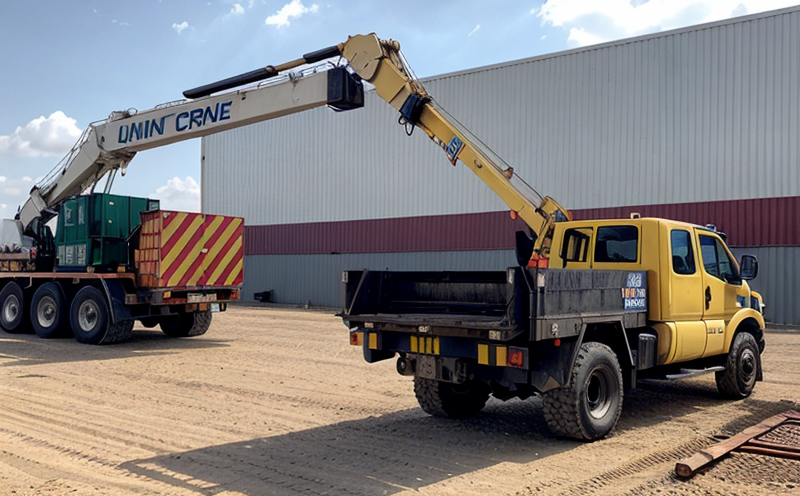Unloading crane inspection
The unloading crane inspection is a critical component of ensuring safety and compliance in industrial environments. Unloading cranes are used to transfer materials from vehicles or ships to warehouses, processing facilities, and other storage locations. These cranes operate under heavy loads and in demanding conditions, making regular inspections essential for preventing accidents and equipment failures.
During an unloading crane inspection, the focus is on several key areas including structural integrity, wear and tear, electrical systems, hydraulic components, and load-bearing mechanisms. The inspection process involves a thorough visual examination of the crane's components followed by detailed testing using specialized tools such as ultrasonic probes for weld inspections, eddy current sensors for surface defects in metals, and borescopes for internal inspections.
Inspection intervals are typically determined based on manufacturer recommendations, local regulations, and industry best practices. For instance, many guidelines recommend annual inspections for cranes used in high-risk environments such as refineries or ports handling hazardous materials. However, inspections can be more frequent depending on the crane's usage, environmental conditions, and historical performance.
The inspection process is highly standardized to ensure consistency across different facilities. International standards like ISO 4309:2017 provide guidelines for general requirements of lifting appliances, while specific cranes may follow additional sector-specific codes such as ASME B30.25 for mobile cranes or EN 369 for tower cranes.
During the inspection, technicians use a variety of non-destructive testing methods to assess various aspects of the crane's condition. For example, ultrasonic testing can detect internal flaws in components like gears and shafts without causing damage. Magnetic particle inspection is used to identify surface cracks in ferromagnetic materials such as steel parts.
The findings from these inspections are documented meticulously. Reports typically include detailed descriptions of any defects or issues identified during the inspection along with recommendations for repairs or replacements. These reports serve multiple purposes including compliance with regulatory requirements, informing maintenance schedules, and providing valuable data for continuous improvement processes within an organization.
Regular unloading crane inspections not only enhance safety but also extend the operational life span of cranes through proactive maintenance practices. By identifying potential problems early on, organizations can avoid costly repairs or replacements later down the line. Furthermore, adhering to best practices in this area helps maintain a positive reputation among clients and stakeholders by demonstrating commitment to high standards of quality assurance.
Industry Applications
Construction sites where heavy machinery needs frequent relocation and operation.
Warehouses that handle large quantities of goods requiring efficient loading/unloading operations.
Ports handling bulk cargo such as grain, ore, or containers.
Retail distribution centers processing high volumes of consumer products.
Facilities dealing with hazardous materials where safety is paramount.
Cold storage units maintaining specific temperature conditions during loading/unloading processes.
Offshore platforms requiring specialized lifting equipment for transporting personnel and supplies.
Manufacturing plants producing high-value items necessitating careful handling to prevent damage or contamination.
International Acceptance and Recognition
The unloading crane inspection follows stringent international standards that ensure consistency across different regions. The primary standard governing this field is ISO 4309:2017 which sets out general requirements for lifting appliances including cranes used in various industries.
In addition to these global guidelines, specific sectors may have additional local or regional regulations. For example, maritime ports often comply with International Maritime Organization (IMO) conventions related to safety of life at sea. Similarly, oil and gas installations might adhere to American Petroleum Institute (API) specifications for offshore operations.
Compliance with such standards is crucial not only from a legal standpoint but also because it enhances trust between trading partners who require proof that proper procedures are being followed when importing/exporting goods via cranes.
Competitive Advantage and Market Impact
Implementing robust unloading crane inspection practices offers several advantages over competitors. Firstly, it ensures compliance with all necessary regulations thereby reducing the risk of costly fines or shutdowns due to non-conformance. Secondly, by maintaining high levels of safety and reliability, companies can improve their overall reputation among clients and stakeholders.
Furthermore, implementing advanced inspection techniques like drone-based inspections (drone-assisted visual assessments) or artificial intelligence-driven predictive maintenance systems can provide a competitive edge in terms of efficiency improvements and reduced downtime. These technologies allow for more accurate monitoring of crane performance which leads to better resource allocation decisions by management teams.
The market impact extends beyond individual companies; it contributes positively towards overall industry standards. As organizations adopt best practices in this area, they set new benchmarks that other players must follow eventually leading to an improvement across the entire sector's operational capabilities and safety levels.





